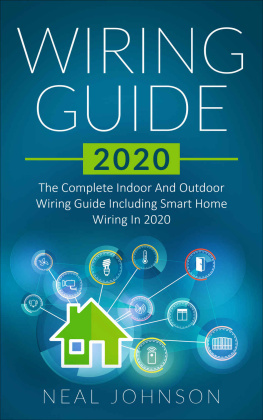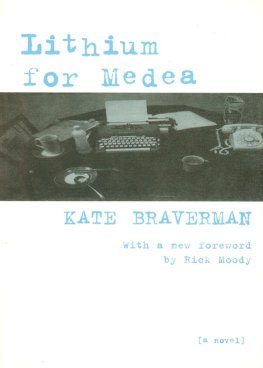Johnson - Wiring Guide: The 2020 Lithium-Ion Battery Guide: The Ultimate DIY Guide To Building Lithium-Ion Battery Packs
Here you can read online Johnson - Wiring Guide: The 2020 Lithium-Ion Battery Guide: The Ultimate DIY Guide To Building Lithium-Ion Battery Packs full text of the book (entire story) in english for free. Download pdf and epub, get meaning, cover and reviews about this ebook. year: 2020, genre: Home and family. Description of the work, (preface) as well as reviews are available. Best literature library LitArk.com created for fans of good reading and offers a wide selection of genres:
Romance novel
Science fiction
Adventure
Detective
Science
History
Home and family
Prose
Art
Politics
Computer
Non-fiction
Religion
Business
Children
Humor
Choose a favorite category and find really read worthwhile books. Enjoy immersion in the world of imagination, feel the emotions of the characters or learn something new for yourself, make an fascinating discovery.
- Book:Wiring Guide: The 2020 Lithium-Ion Battery Guide: The Ultimate DIY Guide To Building Lithium-Ion Battery Packs
- Author:
- Genre:
- Year:2020
- Rating:5 / 5
- Favourites:Add to favourites
- Your mark:
- 100
- 1
- 2
- 3
- 4
- 5
Wiring Guide: The 2020 Lithium-Ion Battery Guide: The Ultimate DIY Guide To Building Lithium-Ion Battery Packs: summary, description and annotation
We offer to read an annotation, description, summary or preface (depends on what the author of the book "Wiring Guide: The 2020 Lithium-Ion Battery Guide: The Ultimate DIY Guide To Building Lithium-Ion Battery Packs" wrote himself). If you haven't found the necessary information about the book — write in the comments, we will try to find it.
Wiring Guide: The 2020 Lithium-Ion Battery Guide: The Ultimate DIY Guide To Building Lithium-Ion Battery Packs — read online for free the complete book (whole text) full work
Below is the text of the book, divided by pages. System saving the place of the last page read, allows you to conveniently read the book "Wiring Guide: The 2020 Lithium-Ion Battery Guide: The Ultimate DIY Guide To Building Lithium-Ion Battery Packs" online for free, without having to search again every time where you left off. Put a bookmark, and you can go to the page where you finished reading at any time.
Font size:
Interval:
Bookmark:
Copyright 2020 - All rights reserved.
It is not legal to reproduce, duplicate, or transmit any part of this document in either electronic means or in printed format. Recording of this publication is strictly prohibited and any storage of this document is not allowed unless with written permission from the publisher except for the use of brief quotations in a book review.
 Created with Vellum
Created with Vellum
The installation of a new wiring system or the upgrade of an existing one is not an uphill task. But it is a process-laden experience that requires knowledge of the recommended testing and installation procedures. Moreover, emerging technologies, such as the Internet of Things (IoT), have broadened the scope and functionality of wiring and other electrical processes.
This book is designed to help you learn and perform a wide range of wiring tasks and spare yourself the effort and cost of hiring technicians. It is a step-by-step guide for a broad range of wiring procedures. The different chapters will equip you with the skills for performing electrical tasks, such as indoor and outdoor wiring, as well as Wi-Fi and smart home installations.
T he electrical power ecosystem consists of a variety of network components and installations that support the generation, distribution, and consumption of electrical energy. This ecosystem relies on the wiring system to power the functional and operational elements within it.
A wiring system allows you to supply electrical current to the different components and fixtures in your home. You need a wiring system to connect lights, receptacles, switches, lamps, and fans, as well as other accessories and home appliances. A robust wiring system consists of a network of wires and cables that transmit power between the main distribution board and the designated destination points. The flow of power in your wiring system begins from the meter board of your supplier to the various indoor and outdoor locations.
Electrical wiring operations are based on structured methods. Your home wiring tasks involve either the joint box or looping system, depending on your preferred wiring plans and design.
The joint box system is a wiring method that involves attaching different wires together to establish the connections required to support the flow of electric current to fixtures and outlets. Install relevant connectors to create joints within the joint boxes. As such, this method does not involve a lot of cabling because the joints within the joint boxes will perform much of the power distribution functions. However, the simple structure of the joint system is not sufficient to sustain long term electric wiring installations. This method is ideal for temporary use in your outbuildings or outdoor structures.
The looping system is the most ideal choice for installing a wiring system in your home. Also known as a loop-in system, this particular method is considered to be the universally recommended approach to electrical wiring. The looping system distributes energy in a parallel format that allows you to provide individual controls for every single outlet or fixture.
The loop-in dynamics of the method are responsible for bringing a feed conductor into contact with a terminal to create a connection to a fixture or outlet. The loop-in mechanism then conveys the feed conductor to the next point requiring a connection, effectively creating a pattern of loops linked to different points requiring power supply. For example, if you want to create a connection for your light bulb, the loop-in system will automatically set the feed conductor in motion and it toward the terminal. The same procedure applies when creating a connection for a switch, socket, fan, or any other fixture in your wiring network. However, there are requirements that must be met when setting the transmission of loops in the cables. For example, looping the live wire from a fixture, such as a light, is forbidden. Rather, you should loop the live wire conductor in the meter board. Looping of a neutral wire is a bit flexible, as you can do it from either the meter board or any fixture.
Deployment of the looping method in your home wiring presents you with various advantages. This includes cost savings because this method is not dependent on joint boxes. This method also spares you the task of hiding joints in different parts of the building, including the floor and the ceiling. However, there are also several downsides associated with this method. You need a lot of cables and wires to implement the looping method.
Preliminary Preparations
There are several preliminary preparations that you must perform before you get down to work. One of the major mistakes that you can commit is to begin an electrical wiring project before securing the relevant approval from the building department. Visit your local building department and seek the relevant approval required to implement your home wiring project. This includes a permit and appointment schedules for the rough-in inspection during wiring and a final inspection after completion.
When you apply for the relevant permits, take with you the sketch of the wiring system you want to implement indoors, outdoors, or both. The sketch should basically show the scope of your wiring and the positions of the key components, including lighting and outlet locations. It will form the basis for the site inspection at the rough-in and completion stages of your wiring. The inspector will either approve or decline your approval request depending on whether or not your wiring plan meets the required thresholds. Be prepared to answer any questions or address the concerns that the inspector might have about your wiring system. Be ready to accommodate any revisions that the inspector might suggest before approving your sketches. Failure to observe the approval procedures will land you in trouble with the authorities.
Evaluation of Overall Wiring System
Safety always comes first when determining the design and installation aspects of wiring. There are certain standards that must be observed. The choice of the types of wires or cables, as well as their sizes, is dictated by the strength of the electric current and the levels of the voltage that will be imposed on the electrical circuits. As such, the design and components of your entire wiring system must adhere to the recommended threshold for electric current and voltage. This includes the scope of protection and control measures within the circuit and the devices associated with the distribution of electric current within the wiring system.
The design and complexity of your indoor or outdoor wiring will depend on the nature and location of the project. The installation of wiring in a new house will be a lesser task compared to upgrading an existing wiring system. An old wiring system requires more effort to figure out the cabling paths and faulty installations.
However, the evaluation of your electrical wiring system relative to other utility systems in the house is a very important step to begin with. You may want to understand how your wiring plan relates to your plumbing system, regardless of whether the house is new or not. Knowing the position of the plumbing, both indoors and outdoors, will help you determine the appropriate location for laying your wiring system.
Font size:
Interval:
Bookmark:
Similar books «Wiring Guide: The 2020 Lithium-Ion Battery Guide: The Ultimate DIY Guide To Building Lithium-Ion Battery Packs»
Look at similar books to Wiring Guide: The 2020 Lithium-Ion Battery Guide: The Ultimate DIY Guide To Building Lithium-Ion Battery Packs. We have selected literature similar in name and meaning in the hope of providing readers with more options to find new, interesting, not yet read works.
Discussion, reviews of the book Wiring Guide: The 2020 Lithium-Ion Battery Guide: The Ultimate DIY Guide To Building Lithium-Ion Battery Packs and just readers' own opinions. Leave your comments, write what you think about the work, its meaning or the main characters. Specify what exactly you liked and what you didn't like, and why you think so.


















